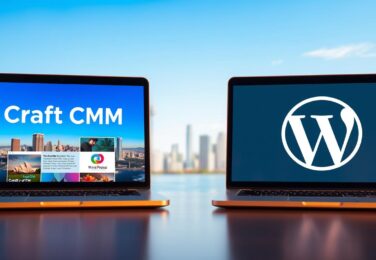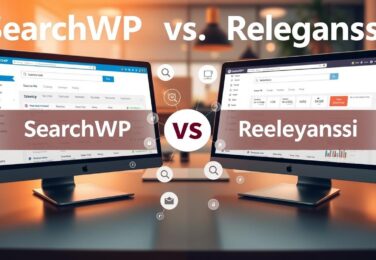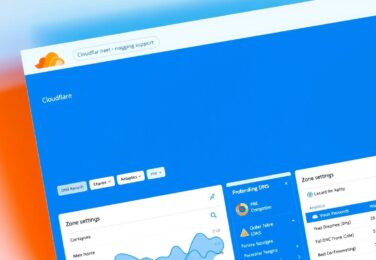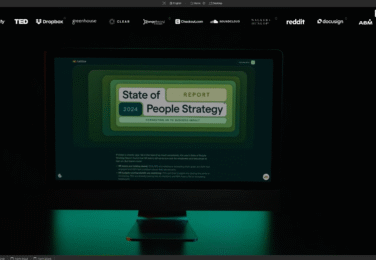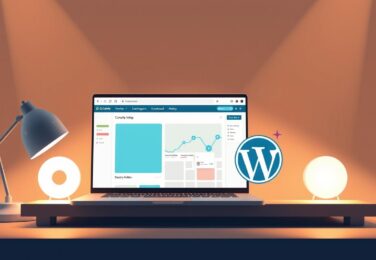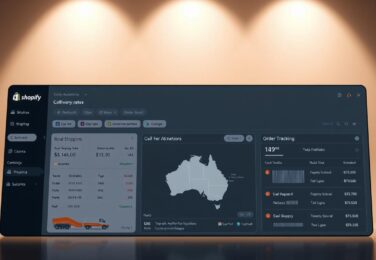Preparing Your WordPress Site for High-Traffic: Media Optimisation Strategies

Table of Content
We know that sinking feeling when a campaign goes live and the site stumbles under demand. We’ve helped clients who lost sales because pages took too long to load. That’s why we focus on media tactics that protect revenue and keep visitors engaged.
In this roundup we set the agenda for high‑traffic readiness. We cover how to reduce page weight, speed up page load and improve overall performance using smart image optimisation and the right plugin choices.
We’ll explain where images sit in Core Web Vitals and why lazy loading, next‑gen formats (WebP/AVIF), LCP preload and CDNs matter. Expect clear guidance on Smush, EWWW Image Optimiser, Optimole, ShortPixel, Imagify and Jetpack, with practical pros and cons.
If you need hands‑on help or want us to work with your developer on customisation, contact hello@defyn.com.au — we’ll get you production‑ready.
Key Takeaways
- Optimise images to cut page weight and improve load times for Australian audiences.
- Choose plugins that offer WebP/AVIF, lazy loading and CDN support.
- Smush, EWWW, Optimole, ShortPixel and Imagify each have distinct strengths.
- Good optimisation reduces bandwidth costs and boosts crawl efficiency.
- Avoid oversized uploads and incorrect display sizes to prevent common pitfalls.
Why media optimisation matters for high‑traffic WordPress sites
Large media files are often the unseen cause of slow pages and lost conversions.
We connect image weight directly to Core Web Vitals. Large bytes inflate Largest Contentful Paint (LCP) and cause layout shifts when dimensions aren’t set. That damages perceived speed and hurts engagement.
Preloading the LCP hero speeds perceived rendering. Tools such as Smush Pro can add fetchpriority=”high” to preload key assets so the main content paints sooner.
Next‑gen formats matter. WebP lossless is about 26% smaller than PNG, WebP lossy 25–34% smaller than JPG, and AVIF can be up to 60% smaller than JPG/PNG. Smaller size means faster loading on Australian mobile networks and better PageSpeed scores.
- Heavy images waste crawl budget; lighter assets let search bots refresh more pages.
- At scale, thousands of files multiply latency and bandwidth costs.
- Missing width/height attributes cause reflows; detect and fix incorrect display sizes early.
These changes deliver measurable gains in conversion and technical SEO. If you want us to review your media pipeline or configure LCP preloading with your developer, contact hello@defyn.com.au.
Search intent and how readers should use this product roundup
We show how to read feature lists so you pick an image solution that holds up at scale.
This roundup is a commercial, impartial comparison to help you match an image tool to your stack, traffic and budget. We focus on practical signals: standout features, pricing limits and implementation caveats.
Read each review for these quick cues:
- Where it fits: privacy sites, e‑commerce, publishers or multisite setups.
- Pricing signals: free tier caps (Optimole: 5,000 visitors/month; ShortPixel: 100 free images/month).
- Settings to note: auto-convert to WebP/AVIF, lazy load exclusions and LCP preload rules.
Below is a concise comparison to guide a shortlist. We tested claims and rely on verifiable features and performance data to keep assessments objective.
| Plugin | Key features | Free tier | Best for |
|---|---|---|---|
| Smush | Pro CDN, LCP preload, bulk tools | Limited | Agencies, multisite |
| EWWW | Unlimited server-side compression | Yes | Privacy-sensitive sites |
| Optimole | Real-time CDN, visitor caps | 5,000 visitors/month | Sites needing CDN delivery |
| ShortPixel | Credit-based compress, bulk runs | 100 images/month | Low-volume stores |
| Imagify / Jetpack | One-click bulk / built-in CDN | Varies | Quick wins, simple sites |
If you want a tailored recommendation and rollout plan, email hello@defyn.com.au and we’ll work alongside your developer. Top WordPress consultants in Sydney allows you to expand your online presence.
WordPress Image Optimisation
Good media handling slashes page weight and keeps sites resilient under sudden traffic.
Compression, resizing, next‑gen formats and CDNs explained.
We break compression into clear choices. Lossless keeps every pixel but removes metadata. Lossy gives bigger size reductions by trading tiny visual detail. Some tools offer an “Ultra” mode for maximum shrinkage at higher risk to fidelity.
Set sensible max dimensions so oversized uploads are scaled server‑side or in the cloud. Smush, for example, can resize during optimisation and — in Pro — deliver via a 119‑point CDN so assets serve closer to users, stabilising performance during spikes.
- Next‑gen formats: WebP lossless is ~26% smaller than PNG; WebP lossy is 25–34% smaller than JPG. AVIF can cut size by up to 60% for modern browsers.
- CDNs: Cache images across global points of presence to reduce latency and bandwidth at scale.
- Lazy load & fetchpriority: Delay non‑critical images and prioritise the hero to improve LCP.
- Automation: Bulk runs, background optimisation and on‑upload processing keep libraries consistent.
- Fallbacks: Use automatic format negotiation so older browsers receive compatible files.
These tactics together improve perceived speed and technical SEO. Implementing them via a reliable plugin and CDN strategy helps Australian sites serve optimised images fast, even during heavy load.
Evaluation criteria: features that actually move the needle
Priority goes to features that cut page weight, reduce server load and simplify rollouts.
Lossless, lossy and “Ultra” compression
We expect flexible compression so teams can balance quality and bytes. Lossless preserves fidelity. Lossy trims size with minor visual change. Ultra modes (Smush Pro) squeeze every kilobyte for peak performance.
Conversion, lazy load, LCP and background bulk runs
Automatic WebP/AVIF conversion with fallbacks is mandatory. Lazy load controls and LCP preload must be configurable to improve Core Web Vitals.
Background and bulk optimisation keep historic libraries tidy without blocking dashboards. ShortPixel, Optimole and Smush all offer bulk tools; Optimole has a 5,000‑visitor free tier.
Server‑side vs cloud, API keys and CDN reach
Server‑side processing helps privacy but uses host CPU. Cloud processing offloads work and pairs with CDN delivery—Smush Pro and Optimole provide CDN coverage. Smush’s 119‑point network accelerates global delivery.
- Check for incorrect size detection and reporting to catch regressions.
- Prefer plugins that allow API key multi‑site rollout for consistent settings.
- Verify smart resizing at the edge to keep pages fast across Australia.
Smush by WPMU DEV: award‑winning optimiser with Pro‑level speed features
Smush focuses on practical wins: smaller files, faster paint times and simpler rollouts at scale.
We recommend Smush when teams want a single tool that handles compression, delivery and LCP tuning. It offers lossless, lossy (Super) and Ultra (Pro) compression modes so you can balance quality and bytes.
Key capabilities include:
- Built‑in lazy load and auto‑smush on upload for hands‑off maintenance.
- Bulk Smush plus background optimisation (Pro) to clear backlogs without dashboard delays.
- WebP and AVIF conversion (Pro) with fallbacks to serve images broadly.
- LCP preload (Pro) using fetchpriority=”high” and controls to exclude pages and clear LCP cache.
- 119‑point global CDN (Pro) to serve assets fast across Australia and beyond.
Smush also flags incorrect size detection to stop layout shifts and wasted bytes. Multisite compatibility, directory smush and config inheritance make it practical for agencies managing many sites.
Below is a concise comparison of Smush features to help decide fit for your stack.
| Feature | Free | Pro |
|---|---|---|
| Compression modes | Lossless, Super | Ultra (additional shrinkage) |
| Bulk and background runs | Bulk Smush (manual) | Background optimisation (automated) |
| Next‑gen format conversion | WebP basic | WebP & AVIF with fallbacks |
| LCP controls & CDN | — | LCP preload + 119‑point CDN |
| Multisite & configs | Yes, limited | Full multisite support and one‑click configs |
EWWW Image Optimiser: unlimited free server‑side compression with upgrade path
EWWW Image Optimiser gives teams an affordable, privacy‑friendly path to shrink files without vendor lock‑in.
We like EWWW for small sites and privacy‑sensitive projects. The free version runs unlimited server‑side compression and supports JPG, PNG, GIF and PDF formats.
Built‑in conveniences include automatic scaling, lazy loading and WebP workflows. These features reduce bytes and improve perceived performance by serving appropriately sized images to devices.
Server‑side processing keeps files private, but heavy runs can use host CPU. For high traffic or image‑heavy sites we recommend upgrading to the paid CDN starting at $7/month.
When to pick the CDN
- Keep server processing and privacy needs? Stick with the free server option.
- Need global consistency and lower server load? Use the $7/month CDN to offload compression and delivery.
- Want holistic speed gains? The paid plan adds caching, CSS/JS and Google Font optimisation for better front‑end performance.
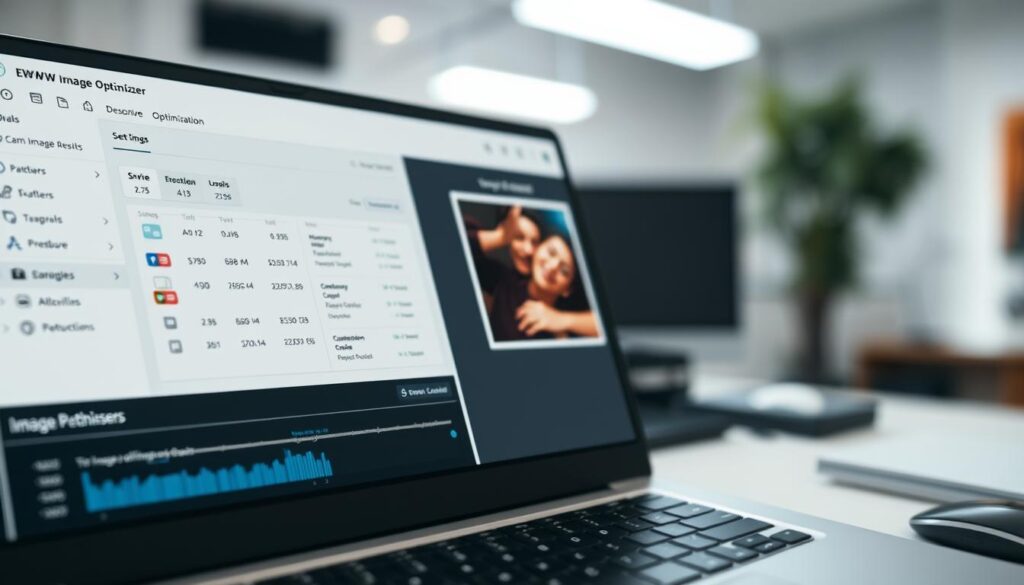
| Plan | Server processing | CDN & delivery | Extra front‑end features |
|---|---|---|---|
| Free version | Unlimited on your host | No | Basic lazy load, WebP |
| Paid CDN ($7/month) | Optional (offloaded) | Yes — global CDN | Caching, CSS/JS & font optimisation |
| Best for | Privacy‑focused, low traffic | High traffic, image‑heavy sites | Sites needing holistic speed gains |
Optimole: real‑time optimisation on a global image CDN
If you want per‑visitor image sizing with minimal setup, Optimole is worth a close look.
How it works: Optimole runs images through a cloud CDN and transforms files on‑the‑fly at the edge. That means each visitor gets perfectly sized files, which reduces bytes and speeds page load.
Setup is quick. Create an account, add the API key in the plugin settings and let the dashboard manage delivery. The central panel shows quality, resizing and loading stats so teams can tune assets without digging into the server.
Key controls include:
- Automatic resizing per device and adjustable quality controls.
- Lazy load to defer non‑critical assets and optional watermarking for IP protection.
- A dashboard to troubleshoot and preview how images will serve images to visitors.
Pricing is visitor‑based: free up to 5,000 visitors/month, then paid plans from about $19.08/month (yearly) for 25,000 visitors. The free tier suits small sites and trials; growing traffic usually needs a paid plan for consistent performance.
ShortPixel Image Optimiser: powerful compression and flexible plans
If you need tight compression with clear reporting, ShortPixel deserves a close look.
Quick snapshot: ShortPixel starts compressing after activation and keeps originals so you can roll back changes. It supports lossy and lossless modes and offers automatic WebP conversion to cut bytes further.
We like ShortPixel for its straightforward workflow and compatibility. It integrates with common plugins and CDNs such as WooCommerce, NextGEN Gallery, WPML and Cloudflare. That makes adoption simple for stores and multisite setups.
- Compression options: choose lossy or lossless based on quality tolerance.
- Bulk tools: run historical bulk optimisation to shrink old files in the library.
- Formats & reporting: automatic WebP conversion plus clear feedback on savings per file and overall.
- Pricing: free 100 images/month; paid plans from $4.99/month for 5,000 images or one‑off credits for sporadic needs.
ShortPixel balances aggressive compression with safe defaults. We recommend it when you want measurable savings and easy integration into existing stacks in Australia.
Imagify and Jetpack: quick wins from trusted performance suites
When teams need fast results, Imagify and Jetpack cut setup time and reduce server strain.
Imagify gives a one‑click bulk workflow for smaller images and automatic resizing. It integrates tightly with WP Rocket and is ideal for teams that want a fast path to better page weight. Affordable plans scale from small sites to larger stores.
Jetpack offers a simple toggle to serve images via its CDN. The acceleration is available in the free version and reduces origin load with minimal configuration. It’s a practical choice if you already run Jetpack for other features.
When to pick these suites
- Quick wins and low setup effort — use Imagify for bulk runs.
- Flip‑a‑switch CDN delivery — use Jetpack to serve images without extra services.
- Limits: less granular controls than specialist tools; not ideal for complex, custom pipelines.
“Great for integrated workflows and teams that value speed over deep tweaking.”
| Plugin | Quick win | Best for |
|---|---|---|
| Imagify | One‑click bulk compression | Teams using WP Rocket |
| Jetpack | Toggle CDN delivery | Sites wanting low effort acceleration |
| Limitations | Less granular settings | Complex image workflows |
Beyond plugins: workflow tips for large numbers of images
Processes matter as much as tools when a site stores many assets.
Start at source. Enforce maximum dimensions before files reach the library so oversized uploads are resized on ingest. Smush supports automated optimisation on upload and can resize to a set max width/height to stop oversized files from bloating a page.
Enable auto‑optimise on image upload to keep the library consistent and reduce manual work. For historic files, schedule background optimisation (Smush Pro offers this) so bulk runs don’t slow the host during peak time.
- Set max dimensions and force them at upload.
- Turn on auto‑optimise and background optimisation for bulk work.
- Document your default quality and conversion settings so teams follow the same rules.
Formats and monitoring
Start with WebP for broad browser support; it saves roughly 25–34% versus JPG and ~26% versus PNG. Test AVIF for hero assets and galleries — AVIF can be up to 60% smaller and gives better size/quality for critical images.
Monitor with PageSpeed Insights on a regular cadence. Watch LCP and the “serve images in next‑gen formats” flag. And set aside time each quarter for a quick bulk check to catch regressions from theme or content changes.
Implementation playbook for high‑traffic launches
Successful launches follow a simple playbook: stage, bulk‑process, cache and verify.
Staging, bulk runs, background optimisation and regression checks
We stage the plugin and run a full bulk pass on a staging copy first. That gives before/after metrics without risking the live site.
Run background optimisation for large libraries to avoid admin timeouts. Smush Pro supports background runs and config inheritance for multisite setups.
Add regression checks to your release checklist. Validate that new assets do not exceed max dimensions and that page load metrics improve.
Serving optimised images at scale: caching layers and CDN rules
Configure cache‑control headers and edge resizing rules. Use a CDN that negotiates WebP/AVIF so visitors get the best formats automatically.
Optimole’s real‑time CDN and EWWW’s paid CDN both offload processing and reduce origin load. Set LCP preload for hero assets and verify fetchpriority=”high” on templates.
| Step | Action | Why it matters |
|---|---|---|
| Stage | Install plugin on staging, run bulk | Safe validation and metric capture |
| Background | Enable background optimisation | Prevents admin slowdowns |
| CDN | Enable edge resizing & WebP/AVIF negotiation | Faster delivery, lower bandwidth |
| LCP | Preload hero, exclude pages as needed | Stabilises hero painting and LCP |
Pricing and value for Australian sites: free version to Pro
Picking the right pricing model matters as much as picking a plugin: it shapes long‑term running costs.
Start with a free version to test shape and savings. EWWW gives unlimited server‑side compression at no cost, while Optimole offers a free tier for up to 5,000 visitors per month. ShortPixel gives 100 free images each month to try before you buy.
Free tiers, monthly caps and models
- Per‑image credit models: ShortPixel charges by credits. Good if your publishing cadence is low and bursts are rare.
- Unlimited monthly models: EWWW and Smush (free limits apply) suit high‑volume libraries where a fixed cap is risky.
- Visitor‑based plans: Optimole bills by visitors — forecast campaign traffic to avoid surprise costs.
Pro plans unlock CDN delivery, AVIF/WebP conversion and background bulk runs. Smush Pro adds CDN, LCP preload and unlimited background processing for serious traffic spikes.
“Factor in developer time, support and hosting savings from lower bandwidth when you model total cost of ownership.”

Need a hand with setup or customisation?
If setup or custom tweaks are slowing your launch, we can step in and help get things running smoothly.
We work with your developer to remove friction and protect your campaign windows. Smush offers reusable configs and multisite support. Many tools need API keys and a quick dashboard setup. EWWW can run server‑side for privacy. Optimole, ShortPixel and Imagify usually require a simple account and key pairing.
What we do:
- Evaluate your current setup and recommend the right plugin and settings in your dashboard.
- Integrate CDNs, automate on‑upload optimisation and set LCP preloads across templates.
- Build reusable configs for agencies and multisite, and document the workflow.
- Run handover training and deliver a lightweight playbook to save time and lower risk.
Email hello@defyn.com.au and we’ll plan a quick diagnostic and a rollout that suits your site and team.
| Service | What we deliver | Best for |
|---|---|---|
| Audit | Plugin review, dashboard checks, API key validation | Sites preparing for traffic |
| Implementation | CDN wiring, LCP preload, automated upload rules | Stores & publishers |
| Handover | Playbook, training, reusable configs | Agencies & multisite |
Conclusion
This conclusion gives clear action points so your assets don’t become a traffic liability.
Recap the path: compress effectively, convert to next‑gen formats, resize correctly and serve from a capable CDN to protect site load and page performance.
Choose the right tool for your needs: Smush for an all‑rounder with LCP preload and CDN, EWWW for unlimited server‑side saves, Optimole for real‑time CDN transforms, ShortPixel for tight compression credits, and Imagify/Jetpack for fast wins.
Lock in LCP preload, lazy loading and background bulk workflows before big events. Monitor quality, features and settings as content grows. If you need expert help to implement and maintain an image optimizer and to optimise images at scale, email hello@defyn.com.au.

